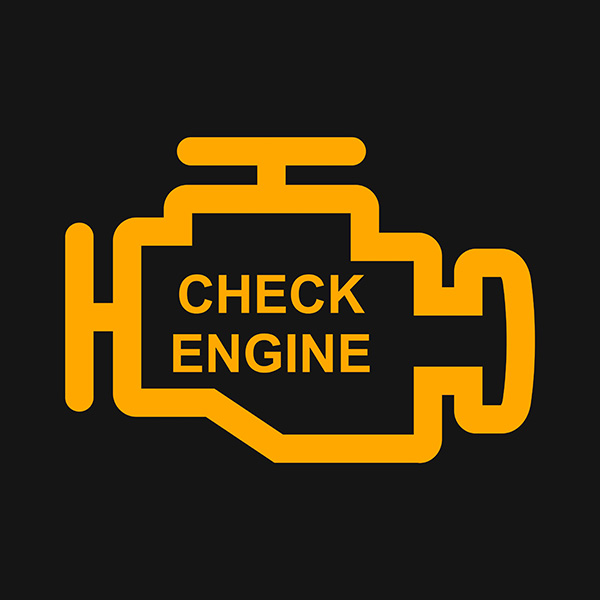
Your check engine light is your dashboard's most misunderstood warning indicator. It’s easy to assume that as long as your car is running fine, the light isn’t a big deal. But ignoring it can lead to serious mechanical problems, expensive repairs, and even a breakdown at the worst possible time.
This warning light is your vehicle’s way of telling you that something isn’t functioning as it should. Whether it’s a minor issue like a loose gas cap or a major problem like a failing catalytic converter, putting off an inspection can allow small issues to turn into major, costly repairs. Understanding what your check engine light means and what can happen if you ignore it can save you both time and money.
Why Does the Check Engine Light Turn On
Your car’s onboard diagnostic system (OBD-II) is designed to monitor key engine and emissions components. When it detects a problem, the check engine light turns on to alert you. The cause could be minor or severe, but the system itself doesn’t always tell you exactly what’s wrong—it simply detects irregularities and signals that something needs attention.
A solid check engine light usually means a less urgent issue, such as a failing oxygen sensor, emissions problem, or minor fuel delivery issue. While your car may still drive fine, delaying repairs could result in reduced fuel efficiency and increased wear on engine components.
A flashing check engine light, however, indicates a serious problem, such as an engine misfire. When this happens, unburned fuel can enter the exhaust system, potentially damaging the catalytic converter. If this occurs, you should stop driving immediately and have your vehicle inspected to avoid costly repairs.
Common Causes of a Check Engine Light
One of the most common reasons for a check engine light is a faulty oxygen sensor. This sensor measures the amount of oxygen in the exhaust to ensure the proper air-fuel mixture. If it fails, your car may burn more fuel than necessary, reducing efficiency and increasing emissions. A bad oxygen sensor can also cause damage to other parts, such as the catalytic converter.
Another frequent cause is a loose or faulty gas cap. If the cap isn’t sealing properly, it can trigger an evaporative emissions system warning. While this is an easy fix, leaving it unaddressed can cause fuel system inefficiencies.
Worn-out spark plugs or ignition coils can also trigger the check engine light. These components are responsible for igniting the fuel in the engine. If they are faulty, you may notice misfires, rough idling, and reduced acceleration. Driving with failing spark plugs can cause long-term engine damage.
A failing catalytic converter is another serious issue that can cause your check engine light to stay on. This component helps reduce harmful emissions, and when it stops working properly, your car’s fuel efficiency will drop, and you may experience sluggish performance. Catalytic converters are expensive to replace, so addressing the issue early is crucial.
The Risks of Ignoring Your Check Engine Light
Ignoring your check engine light doesn’t mean the problem will go away—it usually means the issue will get worse over time. A minor repair that could have been fixed for a few hundred dollars might turn into a several-thousand-dollar repair if left unaddressed.
For example, driving with a failing oxygen sensor can lead to excessive fuel consumption, which not only costs you more at the pump but also increases wear on the engine. If a misfire is causing the light to turn on, unburned fuel can damage the catalytic converter, leading to an expensive replacement.
There’s also the risk of a complete engine failure. Some check engine light issues involve critical engine components. If left ignored, problems such as overheating, poor lubrication, or fuel mixture imbalances can cause permanent damage that may require a full engine rebuild or replacement.
How Long Can You Drive With the Check Engine Light On
If your check engine light is solid and your car is driving normally, you might be able to drive for a short period without major consequences. However, it’s important to schedule an inspection as soon as possible to prevent worsening conditions.
If the check engine light is flashing, you should pull over immediately and avoid driving until the issue is diagnosed. Continuing to drive with a flashing light can result in severe engine damage, increased emissions, and expensive repairs.
Signs Your Check Engine Light Needs Immediate Attention
Some warning signs should never be ignored. If you experience any of the following along with your check engine light, stop driving and seek professional help immediately:
- A rough-running engine or noticeable loss of power
- Unusual noises such as knocking, rattling, or hissing
- Smoke coming from the exhaust
- A strong fuel smell inside or around the vehicle
- Overheating or steam from the engine
These symptoms indicate a serious mechanical issue that could result in permanent engine damage or unsafe driving conditions.
Unsure why your check engine light is on? Our professionals at Rick’s Automotive Service in Lawndale, CA, will find the cause and get you back on the road with confidence. Contact us today for expert service!